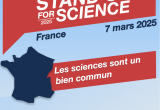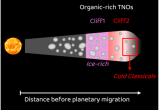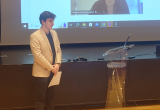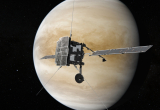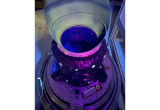Thanks to its newly tilted orbit around the Sun, the ESA-led Solar Orbiter spacecraft is the first to image the Sun’s poles from outside the ecliptic plane. This unique viewing angle will change our understanding of the Sun’s magnetic field, the solar cycle and the workings of space weather.
You are here
Archive
The Simons Observatory (SO has reached a significant milestone with the successful installation of its Large Aperture Telescope (LAT).
At midday on Wednesday March 19, 2025, ESA released the first survey data from the Euclid space mission.
We stand in solidarity with all our colleagues who are victims of the attacks on science, particularly by the Trump administration. We categorically oppose all forms of censorship and reaffirm our unwavering commitment to the fundamental values of science: freedom, integrity and openness. We are committed to defending these values, and we invite you to join us in this commitment, particularly through Stand Up for Science actions.
The James Webb Space Telescope (JWST) is transforming our understanding of trans-Neptunian objects (TNOs), the icy remnants of planetary formation. As part of the DiSCo-TNOs project, researchers have used JWST’s near-infrared data to identify two distinct groups among spectrally red TNOs, believed to be rich in organics. The key difference between these groups is the presence of surface ices—particularly methanol (CH₃OH) ice.
Dan Pineau, from the AMIS team, brilliantly defended his thesis on the fusion of imaging and spectroscopy data, with application to JWST data. Thesis carried out under the supervision of Alain Abergel (IAS) and François Orieux (L2S). He is now a new doctor at the University of Paris-Saclay, and will be heading for Luxembourg. Congratulations to him!
Since its launch in 2020, Solar Orbiter has carried out a number of gravity assists at Earth and Venus to gradually shrink its orbit and bring it closer to the Sun, but never before has it come as close to a planet as it did on 18 February 2025, when it came within just 379 km of Venus. For comparison, astronauts aboard the International Space Station orbit the Earth at an average altitude of 408 km.
The first "Green Day" at IAS, dedicated to climate change and carbon emissions, took place on Thursday, January 9, 2025. This initiative aims to raise awareness within our community about environmental issues and promote concrete actions to reduce the carbon footprint associated with laboratory activities.
In line with its values, the IAS has decided to leave the X and Facebook platforms.
Stay tuned to this web page for news about our research and the laboratory's key events.
Thank you for following us.
Best wishes for 2025 from the Institut d'Astrophysique Spatiale !
The electronic greeting card can be found here.






